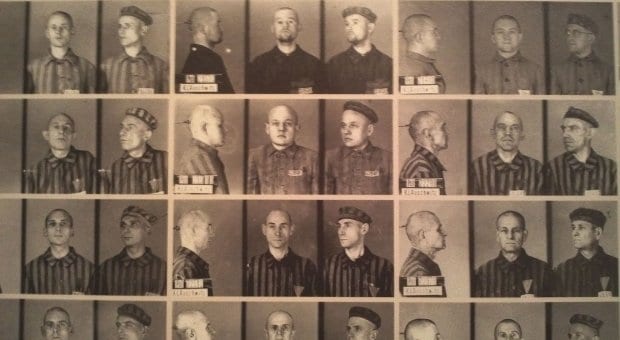“We had received a complaint from a student in a high school in Canada who explained, during a history lesson, when the teacher talked about what happened to homosexuals during the Holocaust, a group of boys in the class stood up and gave the Hitler salute.”
This is when Helen Kennedy, executive director of Egale, knew that she had to bring Nazi Persecution of Homosexuals, 1933–1945 to Canada.
The exhibition, which features 30 panels of documents, diagrams and images, is on loan from the United States Holocaust Memorial Museum. It is one in a series dedicated to the lesser-known victims of the Nazi era and chronicles the ill treatment of homosexuals in Germany. It also follows the evolution of Section 175, the German declaration that “unnatural indecency” between two men be punishable (YouTube has an excellent documentary on the evolution of Section 175, Paragraph 175 – Homosexuals in Nazi Germany).
“We can all relate to growing up gay in a predominantly heterosexual — or heterosexist — culture,” says artist Charles Pachter, the co-chair of the exhibit. “[It’s] something of a private torture as a young man, and it took years and years to gain self-acceptance and reach out to others who just happen to have a blip in human behaviour, liking rice rather than potatoes. Simple as that.”
The panels of Nazi Persecution of Homosexuals examine the horrors that gay men in Nazi Germany faced every day: wrongful imprisonment, forced questioning, “outing” of colleagues and friends, and the forced labour of prisoners in concentration camps in the name of rehabilitation.
“We’ve toured the exhibit from Winnipeg, over here in Toronto for a week, and packing up next Thursday to go to Vancouver,” Kennedy says. “It will be in Vancouver until December. It’s been an interesting journey, to get the exhibit here, that started two years ago in Winnipeg.”
“It’s an important exhibition that everyone needs to see,” Pachter notes solemnly. “Let us be grateful.”
It can be easy to forget the sacrifices made by people in the past — and even in the present, as witnessed in Russia — and the exhibit works hard to make sure its viewers never forget that we stand on the shoulders of the great men and women who fought for their freedoms.
The Nazi Persecution of Homosexuals, 1933–1945 runs until Tues, Oct 8
MNJCC, 750 Spadina Ave
egale.ca/discrimination-and-hate-crimes/nph-exhibit-toronto


 Why you can trust Xtra
Why you can trust Xtra


